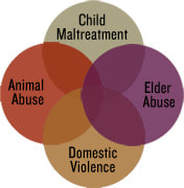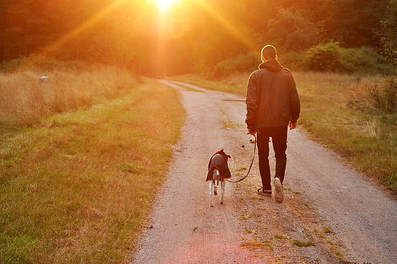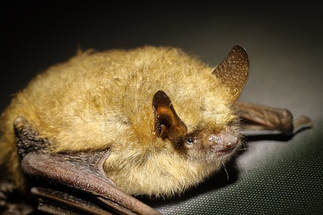The One Health Concept speaks to the idea that everything is interconnected. The connections between animals, humans, and the environment are plentiful, and they span broadly across disciplines. If individual groups only focus internally, information and opportunities to grow and improve will be missed. However, if differing groups recognize the overlap and work to build bridges and connections, there is more room for growth, exchange, innovation, and success.
Wherever humans and animals connect, One Health topics emerge. ForensiVet Mobile Veterinary & Forensic Consulting, PLLC works to raise awareness about the highly relevant One Health topics of the LINK between animal abuse and interpersonal violence, zoonotic diseases (diseases that are transmitted between people and animals), safety around animals, and the Human-Animal bond.
Wherever humans and animals connect, One Health topics emerge. ForensiVet Mobile Veterinary & Forensic Consulting, PLLC works to raise awareness about the highly relevant One Health topics of the LINK between animal abuse and interpersonal violence, zoonotic diseases (diseases that are transmitted between people and animals), safety around animals, and the Human-Animal bond.
The LINK

Overwhelming information and research repeatedly shows that a LINK exists between animal abuse and other crimes against humans.
In short, we refer to this as "The LINK". The VIN diagram shown here was developed by the National Link Coalition, a group working diligently to raise awareness about the LINK. The diagram is a simplistic, yet powerful, portrayal of how overlap exists between animal abuse, child maltreatment, elder abuse, and domestic violence.
In short, we refer to this as "The LINK". The VIN diagram shown here was developed by the National Link Coalition, a group working diligently to raise awareness about the LINK. The diagram is a simplistic, yet powerful, portrayal of how overlap exists between animal abuse, child maltreatment, elder abuse, and domestic violence.

When we explore reasons why a person would abuse an animal, we come across explanations such as:
Reading through these explanations, it becomes apparent how animal abuse can cross boundaries. In fact, the LINK between animal abuse and other crimes against humans begins to take the shape of a complicated web.
- Ignorance
- Inability to empathize
- Lack of adequate coping skills
- Previously socialized to abuse
- A way to gain power and control
- Sense of entitlement
- Personality dysfunction
- Poor impulse control
- Children may harm animals to act out or displace aggression
Reading through these explanations, it becomes apparent how animal abuse can cross boundaries. In fact, the LINK between animal abuse and other crimes against humans begins to take the shape of a complicated web.

Domestic Violence:
- Pet abuse is one of the 4 significant indicators of who is at greatest risk of becoming a batterer.
- Abusers will threaten, harm, and kill pets to control their partner. Greater than 71% of battered women stated batterers had harmed, killed, or threatened animals to coerce, control and humiliate them (1).
- Battered women are afraid to leave home because of fear for their pets.

Child Maltreatment:
- A child watching the abuse of an animal is experiencing emotional trauma.
- The experience of repeatedly watching someone abuse an animal can possibly desensitize the child to the act.
- Abusers may threaten, harm, or kill pets to coerce children into doing what they don't want to do.
- A child may be harmed in the process of trying to intervene to help a pet.
- Children who abuse animals themselves could be giving clues to other problems they may be having.
- Children who abuse animals may escalate into other behaviors down the road, especially if there is no intervention to help the child stop the behavior.

Elderly and Abuse:
- Inadvertent neglect can occur when elderly individuals with good intentions for their pets have mobility, transportation, financial, or memory issues.
- Some seniors with limited funds may self-neglect in order to pay for their pet care.
- Animal hoarders are often older individuals.
- Children may refuse to care for an elderly parent's pets, or they may even use the pet as a way to exploit the parent financially.
Future Predictor?
While not always the case, animal abuse can be a predictor of future crimes against humans. This single fact is an incredibly powerful reason why it is imperative that animal abuse be taken seriously. All individuals can learn how to recognize signs of animal abuse. Anyone can speak up and report known or suspected animal abuse.
For further information, you can visit the National Link Coalition website, which has compiled a large amount of educational and helpful resources on the LINK.
While not always the case, animal abuse can be a predictor of future crimes against humans. This single fact is an incredibly powerful reason why it is imperative that animal abuse be taken seriously. All individuals can learn how to recognize signs of animal abuse. Anyone can speak up and report known or suspected animal abuse.
For further information, you can visit the National Link Coalition website, which has compiled a large amount of educational and helpful resources on the LINK.
Zoonotic Diseases

Zoonotic diseases are diseases which can be transmitted between animals and humans. People who own pets or interact with any animals should be aware of the possibility of zoonotic disease transmission. Additionally, children under the age of five, pregnant women, the elderly, and individuals who are immunocompromised should understand that they may be at an increased risk for zoonotic disease transmission. Furthermore, these groups may become very sick if they do contract a zoonotic disease. Transmission of zoonotic diseases can occur through exposure to contaminated substances. For example, the saliva, blood, urine or stool of an infected animal, contaminated drink or food, and exposure to a vector that transmits the disease (e.g. mosquito, tick, flea) are all ways a zoonotic disease could be transmitted.
The Centers for Disease Control (CDC) reports that approximately 6 out of every 10 known infectious diseases in people are spread from animals. Furthermore, 3 out of 4 new or emerging infectious diseases in people are spread from animals. Understanding the risk and taking precautionary steps around pets are things all individuals can do to protect their pets and families.
The Centers for Disease Control (CDC) reports that approximately 6 out of every 10 known infectious diseases in people are spread from animals. Furthermore, 3 out of 4 new or emerging infectious diseases in people are spread from animals. Understanding the risk and taking precautionary steps around pets are things all individuals can do to protect their pets and families.
- Keep hands clean by washing with soap and water, especially after picking up animal waste, handling, and feeding animals.
- Avoid handling and interacting with wildlife. Wildlife should be enjoyed from a distance. Learn what to do here if you encounter a bat (hint: don't touch it!). The One Health Commission Bat Rabies Education Team has free downloadable posters (in English, Spanish, and Portuguese) that you can share and post to spread the word about bats and rabies.
- Always pick up your pet's stool right away. Pets can transmit intestinal parasite eggs in the feces that can contaminate the environment for years and years. Plus - it will keep your neighborhood cleaner and make your neighbors happy!
- Avoid feeding raw meat diets to pets. These diets can carry harmful bacteria that can make your pets sick and pose a public health risk to household members.
- Cover sandboxes so that outdoor cats will not use the box as a "litter box". As discussed above, any infectious agents in the cat's stool will contaminate the sandbox and pose a risk to any child playing in the box.
- Have your pet's stool sample checked every 6 to 12 months by your pet's veterinarian. Pets can be exposed to intestinal parasites outdoors, or even in potting soil or through ingesting infected cockroaches or house flies.
- Use flea and tick prevention year-round for pets. Both fleas and ticks can transmit zoonotic diseases, they are nuisances, and fleas can be particularly difficult to get rid of once they have established in the environment. Consider performing regular tick checks on your pet, keep the yard mowed, and cut back weeds around the edges of the yard to further protect your pets from tick-borne diseases.
- Keep your pet's vaccinations up-to-date, especially those that protect against zoonotic diseases (e.g. rabies).
Zoonotic Disease Examples:
While not meant to be a comprehensive list, here are some of the more common zoonotic diseases encountered in companion animal veterinary medicine.
While not meant to be a comprehensive list, here are some of the more common zoonotic diseases encountered in companion animal veterinary medicine.
- Rabies
- Leptospirosis
- Tick-Borne Disease (Lyme Disease, Ehrlichiosis, Anaplasmosis, Rocky Mountain Spotted Fever, etc.)
- Cat Scratch Fever (Bartonellosis)
- Roundworms
- Hookworms
- Toxoplasma
- Giardia
- Tapeworms
If you have human-related health concerns or questions, you should always contact your medical care provider. If you have pet-related health concerns or questions, you should contact your pet's regular veterinarian.
Safety Around Animals
The benefits of human-animal interactions are numerous. Yet it must be acknowledged that human-animal interactions must be carefully balanced to ensure appropriate safety measures are implemented. Furthermore, we should always keep in mind that the interaction should be pleasurable for both the human and the animal. The level and type of safety precautions will of course vary depending on the type of animal, the situation at hand, and the age, training, and background of the person.
There are some important considerations for everyone to keep in mind:
General:
There are some important considerations for everyone to keep in mind:
General:
- All animals can carry zoonotic diseases. Bites or scratches from animals can transmit a variety of bacterial infections, or even the deadly rabies virus.
- All animals can use defensive mechanisms such as biting and scratching.
- Pets, even those of the most gentle nature, can still become defensive or aggressive if in pain, scared, or in an unknown environment.

Wildlife and Strays:
- Wild animals are untame, and stray animals may or may not be tame. If approached, these animals can have aggressive or unpredictable behavioral responses.
- Utilize your community resources, including animal control officers, or trained wildlife professionals, if you have a wild or stray animal that needs to be removed from your property or home.
- Bats can be a particular concern when found inside a dwelling since they can transmit rabies, and a bite from a bat may go unnoticed. If you find a bat in your home, confine it in a room by closing doors and windows and then contact your local animal control and public health department. You should also contact your physician for further instructions. If you have pets you should also contact your pet's veterinarian. Time is of the essence, especially if the bat turns out to be rabid.
Children:
- Teach children to appreciate wildlife from a distance and to never approach a stray dog or cat.
- Talk with children about what to do if approached by a stray dog: Stand still like a tree and do not make eye contact with the dog. When the dog moves on, walk (don't run!) to find an adult.
- Help children understand common behavioral cues that dogs and cats will send. This way they will understand when the pet wants to be left alone.
- Explain to children that even the nicest pets can lash out if they are in pain or feel afraid.
- Pets may behave differently with visitors in the home. Help kids understand they will need to go slowly and be considerate if the friend's pet chooses not to interact with them.
- Pets should not be forced into being held, rubbed, or groomed. Whenever an animal is forced into something it does not want to do, it is more likely to become defensive or aggressive. Find ways to allow the pet to choose to interact with people (through play time, or treats for example).
Human-Animal Bond
There is a bond that can undeniably develop between humans and animals. The Human Animal Bond Research Institute (HABRI) defines the human-animal bond as "a mutually beneficial and dynamic relationship between people and animals that is influenced by behaviors that are essential to the health and well-being of both. This includes, but is not limited to emotional, psychological, and physical interactions of people, animals, and the environment."
Positive interactions between humans and animals have been shown to be related to internal physiological changes that occur both in humans and animals. For example, blood pressure, heart rate, and hormone levels correlated with well-being are affected when humans and animals interact. Hormones affected can include cortisol, oxytocin, b-endorphin, prolactin, phenyl acetic acid, and dopamine.
Research(3, 4) suggests that pet companionship can affect humans in a number of positive ways:
Child Health & Development:
Positive interactions between humans and animals have been shown to be related to internal physiological changes that occur both in humans and animals. For example, blood pressure, heart rate, and hormone levels correlated with well-being are affected when humans and animals interact. Hormones affected can include cortisol, oxytocin, b-endorphin, prolactin, phenyl acetic acid, and dopamine.
Research(3, 4) suggests that pet companionship can affect humans in a number of positive ways:
Child Health & Development:
- Animal-assisted therapy is a treatment option for autism spectrum disorder. Through interactions with therapy dogs, patients can develop better social and emotional connections and increase levels of beneficial hormones.
- Early exposure to pets can positively impact the risk of developing allergies and asthma later in life.
- Childhood development can be influenced in a positive way through pet ownership and animal therapy. Benefits to reading and cognition, emotional development, and social skills have all been seen.
- Research shows many positive results with using animal-assisted intervention for PTSD.
- Animal-assisted therapy has shown many promising results for individuals who have experienced trauma (including sexual abuse, physical abuse, and other types of trauma).
- Mental health concerns such as anxiety, depression, stress, and loneliness can be reduced through animal-human interactions.
- Companion animals can even help create opportunities for friendship formation and social support networks.
- Quality of life and well-being can be influenced positively through animal companionship.
- Reduction of cardiovascular risk factors (e.g., lack of exercise, obesity, hypertension, hyperlipidemia, stress, depression) can occur through human-animal interactions.
- Cancer patients can benefit from positive animal interactions. This can ultimately help decrease cancer therapy discomfort, depression, or even promote a sense of wanting to "get better".
- Dogs are being researched for their potential ability to detect cancer.
- Interactions with pets can help facilitate healthy aging through decreasing depression, loneliness, tension, and confusion.
- The human-animal bond can improve quality of life in Alzheimer's patients as well as their caregivers.
- Improvement in the health of humans through pet ownership can ultimately produce an economic benefit (healthier and happier people means less doctors visits). According to a 2015 report(2) from HABRI, pet ownership saves $11.7 billion in health care costs!
References:
- Ascione, F.R., Weber, C.V. and D.S. Wood. 1997. The abuse of animals and domestic violence: A national survey of shelters for women who are battered. Society & Animals. 5(3): 205-218.
- Clower, T.L. and T.T. Leaves. 2015. The health care cost savings of pet ownership. Prepared for the Human Animal Bond Research Institute (HABRI). Pp. 1-12.
- Research. The Human Animal Bond Research Institute (HABRI) website. Accessed Jan. 25, 2018.
- Takashima, G.K. and M.J. Day. 2014. Setting the One Health agenda and the human-companion animal bond. Int. J. Environ. Res. Public Health. 11(11): 11110-11120.
Copyright © 2017-2022. ForensiVet Mobile Veterinary & Forensic Consulting, PLLC
